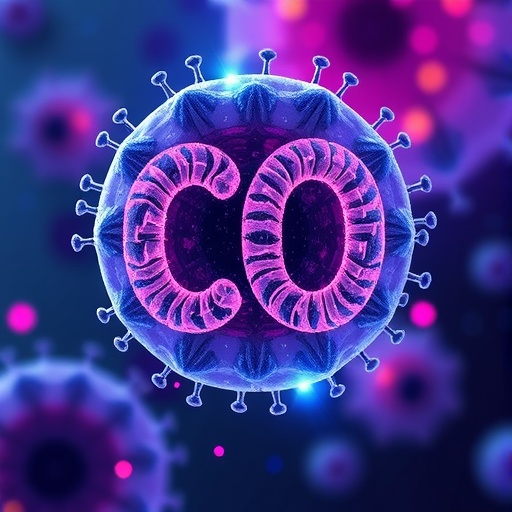In a groundbreaking study published in the esteemed journal Nature Chemical Biology, a collaborative research team from the Max Planck Institute for Marine Microbiology and the Max Planck Institute of Molecular Cell Biology and Genetics has unveiled the remarkable biochemical processes employed by the microbe Clostridium autoethanogenum. This organism has the ability to convert toxic industrial waste gases, predominantly rich in carbon monoxide (CO) and carbon dioxide (CO₂), into ethanol—a renewable biofuel with immense potential to contribute to sustainable energy solutions.
At the core of this research lies the fundamental question: how does a microbe transform lethal gases into usable forms of energy? Clostridium autoethanogenum, which was first discovered in the droppings of rabbits, has evolved to utilize carbon monoxide as a primary energy source, an ability that is not only extraordinary but essential in the context of reducing greenhouse gas emissions and promoting circular economies. The process hinges on complex metabolic pathways, whereby the microbe leverages carbon monoxide to create valuable cellular components, while concurrently generating biofuels suitable for industrial applications.
While Clostridium autoethanogenum is recognized for its pivotal role in large-scale bioethanol production, the enzymatic mechanisms facilitating its ethanol synthesis have remained largely enigmatic. A critical reaction within this process is believed to involve the conversion of acetate into acetaldehyde—an intermediate compound that eventually leads to ethanol production. Historically, skepticism surrounded the chemical possibility of this transformation within the organism, leading to various hypotheses and debates among scientists. This recent study has decisively resolved these uncertainties, providing valuable insights into the underlying biochemical processes.
The enzyme crucial to facilitating the reduction of acetate is identified as aldehyde:ferredoxin oxidoreductase (AFOR). This enzyme is particularly noteworthy due to its incorporation of tungsten, an element that holds the distinction of being the heaviest naturally occurring atom used in biology. AFOR’s unique structure includes a complex arrangement of iron and sulfur, contributing to its distinct brown coloration. The researchers undertook an extensive characterization of AFOR, employing X-ray crystallography to determine its three-dimensional structure. This detailed insight into its atomic configuration illuminated the enzyme’s interaction with tungsten and its surrounding molecular environment, an endeavor that required significant efforts to revive the enzyme’s activity.
Following the successful purification of AFOR, the team faced an intriguing challenge: how could an enzyme, seemingly unequipped to facilitate the reduction of acetate under standard thermodynamic conditions, be employed effectively in biological systems? This question propelled the researchers to explore synergistic interactions between multiple enzymes. By establishing an artificial pathway that mimicked the synergistic reactions occurring within Clostridium autoethanogenum, they successfully demonstrated the feasibility of converting acetate into ethanol, thus validating the biological viability of the entire reaction sequence.
The implications of this research are profound, particularly in the context of the burgeoning field of metabolic engineering. By elucidating the specific mechanisms by which Clostridium autoethanogenum can convert waste gases into valuable biofuels, the findings pave the way for advanced metabolic engineering strategies aimed at optimizing this organism for enhanced ethanol production and potentially the synthesis of other useful biochemicals. This could lead to innovative approaches for managing industrial waste and mitigating the environmental impact of carbon emissions.
Furthermore, the advancements in understanding AFOR and its associated pathways also open the door for possible applications in other bacterial species, expanding the horizons of microbial-based biofuel production beyond the confines of a single organism. This could significantly broaden the scope of sustainable energy solutions, allowing for the utilization of a diverse range of waste sources and increasing the robustness of biofuel production processes.
The study’s findings contribute to a larger narrative about renewable energy and its place in combating climate change. By showcasing the capabilities of microorganisms like Clostridium autoethanogenum, scientists emphasize the potential of bioconversion technologies in creating a sustainable, environmentally friendly economy. As the world grapples with the challenges of climate change and resource depletion, research that supports the transition to a circular carbon economy is more crucial than ever.
Overall, this study highlights a significant milestone in synthetic biology and microbial biotechnology, showcasing how nature has equipped organisms with the tools necessary to navigate and exploit hostile environments for energy production. The intricate dance of enzymes, cofactors, and reaction pathways exemplified by Clostridium autoethanogenum serves as a paradigm for future synthetic biology endeavors, holding promise for innovative solutions to energy production and environmental sustainability.
In conclusion, the revelations from this research not only bring clarity to the metabolic pathways utilized by Clostridium autoethanogenum but also reinforce the potential of biotechnological advancements in addressing some of the most pressing challenges of our time—creating sustainable energy sources from the waste gases threatening our environment.
Subject of Research: Carbon monoxide-driven bioethanol production in Clostridium autoethanogenum
Article Title: Carbon monoxide-driven bioethanol production operates via a tungsten-dependent catalyst.
News Publication Date: 29-Oct-2025
Web References: DOI Link
References: Nature Chemical Biology
Image Credits: Credit: Olivier Lemaire / Max Planck Institute for Marine Microbiology
Keywords
Bioethanol, Clostridium autoethanogenum, tungsten-dependent catalyst, industrial waste gases, metabolic engineering, sustainable energy, bioconversion, carbon emissions, circular economy, enzymology, AFOR, carbon monoxide recycling.
Tags: biochemical processes in biofuelsbioethanol synthesis mechanismscarbon monoxide conversioncircular economy initiativesClostridium autoethanogenumgreenhouse gas reductionindustrial applications of biofuelsindustrial microbesmetabolic pathways in microbesRenewable energy solutionssustainable biofuel productiontoxic industrial waste gas utilization





